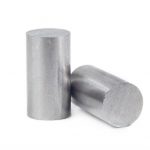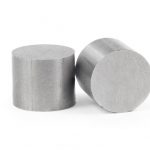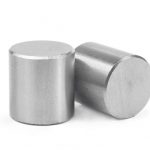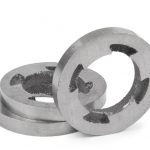AlNiCo Magnets
- General information
- Learn More
- Property Table
- Photo Gallery
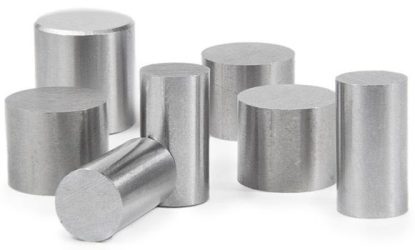
- Cast AlNiCo: LNG 10-96 / AlNiCo 2-9
- Sintered AlNiCo: FLN(G/GT) 8-42 / AlNiCo 2-9
- High magnetic flux density
- Resistance to corrosion
- Excellent temperature stability
We are able to custom the shape and coating for your specific requirements.
General Introduction
Alnico is the permanent magnets composed primarily of Aluminum (Al), Nickel (Ni) and Cobalt (Co). They also include Copper, Ferrum, and sometimes Titanium.
Two kinds of Alnico, Cast AlNiCo and Sintered AlNiCo, are commercial according to their different manufacturing process.
General Introduction
Alnico is the permanent magnets composed primarily of Aluminum (Al), Nickel (Ni) and Cobalt (Co). They also include Copper, Ferrum, and sometimes Titanium.
Two kinds of Alnico, Cast AlNiCo and Sintered AlNiCo, are commercial according to their different manufacturing process.
Features
Features
Typical Grades
Cast AlNiCo: LNG 10-96 / AlNiCo 2-9
Sintered AlNiCo: FLN(G/GT) 8-42 / AlNiCo 2-9
Typical Grades
Cast AlNiCo: LNG 10-96 / AlNiCo 2-9
Sintered AlNiCo: FLN(G/GT) 8-42 / AlNiCo 2-9
Mechanical Property
- Remanence (Br), measure the strength of the magnetic field;
- Coercivity (Hcb / Hcj), the material’s resistance to becoming demagnetized;
- Energy product (BHmax), the density of magnetic energy, which relates to the magnetic flux output per unit volume. Higher values indicate stronger magnets;
- Curie temperature (Tc), the temperature at which the material loses its magnetism.
Mechanical Property
- Remanence (Br), measure the strength of the magnetic field;
- Coercivity (Hcb / Hcj), the material’s resistance to becoming demagnetized;
- Energy product (BHmax), the density of magnetic energy, which relates to the magnetic flux output per unit volume. Higher values indicate stronger magnets;
- Curie temperature (Tc), the temperature at which the material loses its magnetism.
Shape
- Disk/Cylinder, Bar/Block, Ring, Arc, Horseshoe, etc.
Shape
- Disk/Cylinder, Bar/Block, Ring, Arc, Horseshoe, etc.
Application
Some examples of AlNiCo Magnets applications:
- Automotive, aerospace and military sensors
- Instruments communication control systems
- Audio Devices
- Magnetron
- Traveling-wave tubes (TWT)
- Some applications requiring for high temperature stability
Application
- Automotive, aerospace and military sensors
- Instruments communication control systems
- Audio Devices
- Magnetron
- Traveling-wave tubes (TWT)
- Some applications requiring for high temperature stability
Production
Cast AlNiCo:
Raw Materials → Mixing → Melting → Mold Casting → Ingots Selection → Heat Treatment → Tumbling → Magnetic Inspection → Machining → Cleaning and Driving → Machining Inspection → General Inspecting → Packing & Delivery
Sintered AlNiCo:
Raw Materials → Pressing → Sintering → Heat Treatment → Tumbling → Magnetic Inspection → Machining → Cleaning and Driving → General Inspecting → Packing & Delivery
